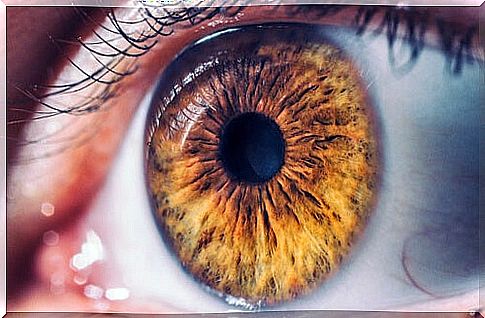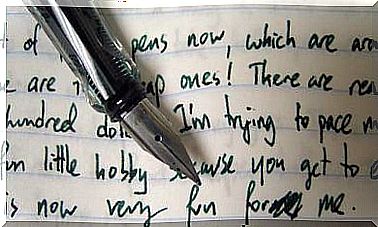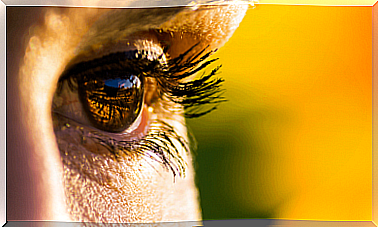Are You Visual, Auditory Or Kinesthetic?

People receive information from the environment around us through the five senses (sense, hearing, taste, touch and smell). They are the ones who allow us to interact with other people and with the environment, they who bring us beauty, discomfort, pleasures and fears. Now, do you think that all people perceive this information in the same way? What’s more, how would you define yourself, visual, auditory or kinesthetic?
The current of neurolinguistic programming (NLP) tells us that the world as we see it does not exist, we are the ones who “reinterpret” it and shape it based on our personality and according to the predominance of some senses over others. Likewise, of all the information that surrounds us on a day-to-day basis, there is much that we discard or do not pay attention to for the same reasons.
This theoretical approach places its focus of interest on a very specific aspect: helping people understand the way they see and interpret the world. Only when we understand it can we change our thoughts and behavior to adjust to what we need: success or healing.
Therefore, knowing which sensitive channel is the one that predominates in us is a beginning in this type of perspective within psychology itself.
What is neurolinguistic programming (NLP)?
Steve Bavister and Amanda Vickers, authors of the book Neuro-linguistic programming (2014), define this approach as a communication model. In other words, it is not a type of treatment, nor a psychological approach that is at the height of humanism or cognitivism. It is a framework through which to find those models of thought that can most help us improve our quality of life.
To this day, continuous reviews continue to be made to assess the effectiveness of this type of methodology. Thus, studies such as the one carried out by the University of Southampton, United Kingdom, and published in the British Journal of General Practice medical journal tell us that there are still no conclusive results on the usefulness of NLP.
However, beyond the more academic vision, there are those who see neurolinguistic programming (NLP) as an interesting resource for the following reasons:
- Improve self-knowledge.
- Boost self-confidence.
- Improve social skills.
- Neuro-linguistic programming is known for offering tools to optimize communication so that it is effective and successful.

And you, are you visual, auditory or kinesthetic?
To better understand what we mean by the question of whether you are visual, auditory or kinesthetic, we will propose an example. When you are introduced to a person, how do you usually react? According to neurolinguistic programming (NLP), people who use the auditory canal tend to prefer a “hello, how are you?”
On the other hand, those who favor a smile or a courteous gesture use the visual channel more. Finally, the one who uses a hug, will undoubtedly be more kinesthetic.
It is clear that we can all have a small mixture of these three dimensions, and that we also usually use them in different situations. Now, according to this perspective, we will always have one predominance or another. Depending on what sense we have more developed, it will in turn determine that channel with which it is easier for us to acquire knowledge and process new experiences.

The visual
Maybe when you drive you like to listen to music. Now, it is also possible that when you arrive in the city and notice that the traffic becomes more dense and complicated, it bothers you to have the radio on, especially if instead of music, words are what you hear. You cannot concentrate. This would be a simple example of people who use the visual sense to a greater degree.
Visuals have a high level of energy, they are restless and observant people, they capture the detail and many of the small aspects that other people miss. They usually visualize images in their mind to be able to remember them and it is common that to do so they have to write small notes or notes. They need quiet places to focus.
The auditory
Are you one of those who usually express your thoughts out loud? Do you always prefer other people to explain things to you than to read them yourself? Do you tend to easily follow people’s conversations even if you are looking away? If so, your mode of processing the information is auditory.
According to the theories of neurolinguistic programming, people with a predominance of the auditory canal tend to be more relaxed, communicative and with great gifts of expression. They like to converse and remember in great detail each of the words they have heard.
The kinesthetic
What are your passions? Do you like cooking, sports, working outdoors? Would you rather experience things before learning about them? NLP tells us that kinesthetic people, despite being calm, have a special taste for emotions and everything that has to do with manual things, with experimenting with touch, taste and smell. They are very expressive, socially open, of those who seek closeness, hugs … physical contact.

A kinesthetic person does not have a special interest in details, such as the more “visual” people, but yes, they are more spontaneous and have a tendency to seek emotions in the first person. Also, and as a curiosity, it is worth mentioning the name of Neil D. Fleming. This professor at the University of Lincoln, in New Zealand, has developed the VARK teaching method, which aims to respond to primary and secondary school students based on the most prevalent sensory channels in them.
Thus, it is known, for example, that the kinesthetic student is the one who has the most difficulties in adapting to the traditional school. It needs more movement and interaction, hence this new model is as original as it is successful.
To conclude, it is clear that all of us have traces of all these dimensions, but what is interesting from the perspective of NLP is that the way we understand reality is closely related to our personality and also to our senses. It is one more way to get to know each other, another interesting perspective with which to turn the key to self-knowledge.









